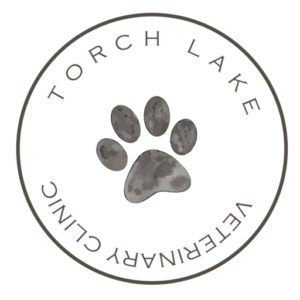Library
-
Many herding breeds (most commonly Collies and Australian Shepherds) have a mutation at the MDR1 gene that makes them more sensitive to the negative effects of certain medications. These drugs include several antiparasitic agents (when given at high doses), the antidiarrheal agent loperamide (Imodium®), and several anticancer drugs. The effects of the mutation vary in severity, depending on whether the dog carries one or two copies of the mutation. There is a cheek swab or a commercially-available test that assesses blood samples for the presence of the MDR1 mutation.
-
Mupirocin otic, also known as pseudomonic acid A, is an antibiotic used in the treatment of ear infections. It is used “off label” or “extra label” to treat ear infections in animals. Mupirocin comes in ointment or liquid drop suspension forms that may be specially compounded.
-
Mupirocin topical, also known as pseudomonic acid A (brand names Muricin, Bactroban, Centany), is an antibiotic used to treat skin infections. It is labeled for use in dogs to treat skin infections caused by susceptible strains of Staphlococcus and other gram-positive bacteria. It is used “off label” or “extra label” to treat skin infections in other species and acne in cats. Mupirocin comes in cream or ointment form.
-
Muscle tears are direct or indirect traumatic injuries that cause damage to muscle tissue. The most common cause is an indirect injury, or strain, caused by overstretching during athletic activities, such as running or jumping. This handout discusses muscle tears in dogs and reviews the causes of these injuries, the clinical signs, diagnostic testing, therapy, and expected prognosis.
-
This handout discusses muscular dystrophy (MD), primarily in dogs. The cause of the disease is a defect in the proteins found in muscle cells. It is often an inherited disease, usually affecting young dogs. Clinical signs (usually starting as muscle weakness) and diagnosis of the condition are outlined. There is no effective treatment for the condition.
-
Many mushrooms are toxic and can cause serious or even life-threatening illness. The severity of illness depends on the type and number of mushrooms ingested. Since mushrooms are difficult to identify, it is best to discourage your pet from eating any mushrooms growing in the wild. Prompt treatment is critical.
-
In an emergency situation, a dog that can easily wear a muzzle can be easily and safely handled. Dogs may show aggressive behavior when frightened or in pain and having a muzzle ensures that no one will be injured and that your dog will be able to be taken to the hospital. Muzzles can also be helpful as part of treatment for behavioral conditions such as fear-based aggression.
-
There are several reasons why your dog might be a picky eater. It’s important to first rule out an underlying medical condition. Picky eaters can be created by their humans offering too much variety of food or can result from dogs being overfed treats and snacks. Homemade diets can be an option, but come with several limitations that need to be carefully considered. Other approaches are outlined.
-
Myasthenia gravis is a disease in which there is a malfunction in the transmission of signals between the nerves and muscles. Dogs with myasthenia gravis exhibit extreme weakness and excessive fatigue. There are two forms: inherited and acquired. Anti-acetylcholinesterase medication and immunosuppressive therapy will likely be required for the life of the dog.
-
Mycophenolate is an immune suppressing medication given by mouth or as an injection and is mainly used off-label to treat autoimmune disease in dogs. Common side effects include gastrointestinal upset and bone marrow suppression. This medication should not be used in pets that are allergic to mycophenolate, are pregnant, or nursing. It should be used with caution in pets with liver or kidney disease. If a negative reaction occurs, call your veterinary office.


